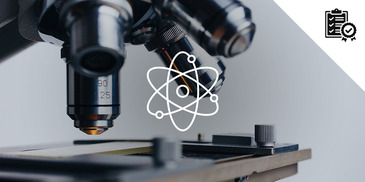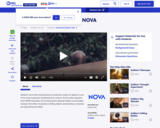
Watch Apollo 15 astronaut David Scott perform Galileo's falling objects experiment on the Moon in this video segment from NASA. [0:47]
- Subject:
- Science
- Material Type:
- Audio/Video
- Provider:
- PBS LearningMedia
- Date Added:
- 12/01/2022


Watch Apollo 15 astronaut David Scott perform Galileo's falling objects experiment on the Moon in this video segment from NASA. [0:47]

How did Galileo figure out the mathematics of falling bodies? This video segment adapted from NOVA examines Galileo's work on motion. [4:00]

The invention of the telescope helped change our understanding of the universe. This video segment adapted from NOVA looks at Galileo's contribution to this technology. [1:49]

Over the course of many years, humans evolved to abandon foraging and took up farming for their food needs. Scientists are still not sure why humans abandoned foraging and took up farming in several places around the world at about the same time. This gallery highlights where agriculture emerged and what was grown.
Khan Academy learning modules include a Community space where users can ask questions and seek help from community members. Educators should consult with their Technology administrators to determine the use of Khan Academy learning modules in their classroom. Please review materials from external sites before sharing with students.

While all cells have a great deal in common, there is no end to the variation among them. These images provide a sense of the wondrous diversity found in the world of cells.

Through this video lesson, learn how to define gas pressure as the collisions of particles of a gas on the sides of its container. [7:08]

A narrated screencast which illustrates the relationship between the temperature and pressure of a fixed volume of gas. [4:46]

The development of creatures that appear to have nothing in common is directed by a surprisingly small number of genes. In this video segment, learn about the power of master control genes. Footage from The Secret of Life: "Birth, Sex & Death." [2:58]

A JavaScript calculator which allows one to investigate the distinction between an ideal gas and a real (Van der Waal or Dieterici) gas. State variables can be entered and an update on the values of other variables are given (as calculated by the ideal gas law equation, the Van der Waal's equation or the Dieterici equation).

This site from the General Chemistry Online of the Frostburg State University provides a review of the history of atomic theory, the discovery of the electron, and the discovery of the nucleus. Details on weighing atoms, ion charges, isotopes, and counting particles.

The topic of this video module is genetic basis for variation among humans. The main learning objective is that students will learn the genetic mechanisms that cause variation among humans (parents and children, brothers and sisters) and how to calculate the probability that two individuals will have an identical genetic makeup. [32:01]

This site from the University of Arizona runs a two-step simulation of Genetic Drift. There are teacher's notes included. A great site to aid in understanding Genetic Drift.

A video tutorial explaining the basics behind genetic engineering in the field of biotechnology. [4:09]

Flip this interactive OLogy card to find questions and answers, fast facts, and other bite-size pieces of information to help you understand genetic modification.

Videos, interactive activities, and articles explaining the influences that cause parts of the genome to be turned on and off. Learn how nutrition, behavior, stress and other factors determine gene expression.

Even in species that look alike to us, individuals have variations in their DNA. Learn why this is important. [3:47]

A detailed explanation, accompanied by labeled illustrations and real-time movies, showing how vesicles move molecules around, both inside and outside a cell.

An explanation of how membranes organize the different parts of a cell into compact, specialized units.

This website offers a clear definition of the science of Genetics, highlighting DNA and genes. There is a neat, easy-to-understand animated tour of the basics and an opportunity to go inside an animated cell. Student can build a DNA molecule and discover how proteins function. Teachers and students alike will enjoy "What Makes a Firefly Glow?" Among others, there is a student activity based on using DNA to solve a mystery of stolen artifacts. The great teacher resources supply guides and suggest classroom activities. All in all, this is a useful site whose simple interactive graphics provide a fun and easy way to learn the difficult subject of DNA.

Get it all straight! The "Tour of the Basics" will help clarify the basic principals of genetics science from DNA, genes, chromosomes, proteins, heredity, and traits.